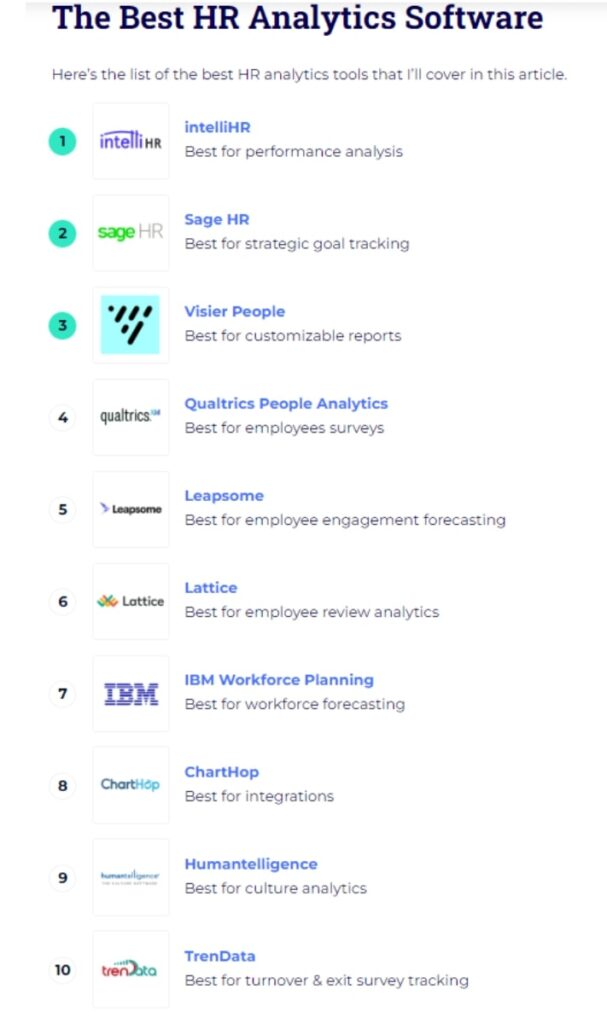Unemployment in the United States is low – 3.6% in April 2022. Resignations are high and expected to increase 20% over pre-pandemic turnover rates. This only calls for one thing – significant change.
The 2022 HR trends we’ve identified at Foothold America are in direct response to this situation. They also inform future trends HR executives need to know.
Understand and support employee mental health & wellbeing
Of course, you care about your people, and you know that an engaged workforce is more productive than disenfranchised, underpaid, stressed employees. It’s not enough to think about employee wellbeing, HR departments with the support of upper management must develop proactive strategies to support the mental health of your workforce and optimize employee engagement. This plays a critical role whether we are talking about remote workers & remote working environment or office workers & office working environment.
Companies that don’t prioritize employee wellbeing and work-life balance of their workforce will likely see high turnover. When it comes to attrition, 25% of employees left employment due to mental health. Can you imagine losing one in four employees due to a preventable reason such as having employer support for their mental health and wellbeing? We recommend your employee wellbeing efforts begin at onboarding and follow the employee lifecycle.
Case Study
The first step is to ask your employees about their wellbeing by using an anonymous survey tool. At Foothold America, we were shocked at the amount of stress employees were experiencing when we used this work/life balance self-assessment from author Rick Hughes’ Get a Life! Creating a Successful Work/Life Balance. After you gather anonymous results (we used Google Forms), go back to employees to ask specifically what they need and want.
We developed a Wellness Committee in our small organization and employee volunteers gathered information from employees to present to management. The next step is to ACT, IMMEDIATELY. On at least ONE initiative.
For Foothold America, it was as simple as providing paid leave for employee birthdays. We wondered why that was desired because we offer above average time off and many employees carry-over leave. Why would they request more leave? The answer is, they feel special when we incentivize them to take their birthday off, and it’s guilt-free because the company encourages it. This is one of the US HR trends you can respond to by just asking questions and taking small actions. Don’t stop there, though. Be sure to develop initiatives you can implement year-round.
Offer hybrid & flexible work models
If there is one thing both small and large companies have learned from the pandemic it’s that with proper support and management, most top talent is as productive or more productive when they work from home (WFH). Over two-thirds of employers report increased productivity from their WFH staff making this one of the US HR trends that can’t be overlooked. A whopping 96% of HR executives and US employers say permitting work from home improves employee retention. It’s estimated in a University of Chicago study that 37% of US jobs can be done entirely from home.
Even with hard data, some HR leaders and managers feel communication and collaboration are improved when employees work in an office. Is this true, or is it an old-school employer’s need for control?
The Humanyze Future of Work Report Part II Fall 2021- The Impacts of Remote Work
With remote workers, HR has a job to doh: finding out whether remote workers are competent and working well with colleagues. Giving remote workers information on their day-to-day responsibilities is essential too; even if there are several more steps an organizat on Employees & The Future of Work Post-pandemic reveals that “both after the start of the pandemic and now, employees communicated more with their immediate teams and the colleagues they collaborate with semi-regularly. These increases are likely a response to the absence of being able to communicate seamlessly in-person, forcing a greater reliance on more frequent collaboration through virtual means”.
Necessity may be the mother of invention as Gartner reported that there was a 44% increase in collaboration tools since 2019. At Foothold America, we saw a distinct improvement in meeting efficiency and collaboration when we implemented the Meeting Decisions app for Teams in 2020. If your industry and positions are conducive to working from home with the aid of collaboration tools, HR professionals should investigate this trend for your organization.
To embrace this HR trend, we highly recommend that HR executives don’t look backward to the outdated office model. If you feel an office is necessary, we recommend a maximum of two days a week in the office at most for workers who can WFH. Of course, some industries have no choice but to be office-bound – lab research, retail, healthcare, etc. In this case, consider off-site, non-work activities as a break. If your budget allows, consider support for commuting expenses. Be careful to abide by US commuter benefits regulations outlined by the IRS (Internal Revenue Service) to be sure you don’t accidentally offer a taxable benefit.
Provide reskilling, upskilling, and career progression
US employees crave career progression and recognize that learning new skills increases the chance of promotion. A 2021 Pew Research study indicates 63% of employees sited ‘no opportunities for advancement’ as the reason for leaving their job. One way for small employers to improve employee engagement when there aren’t promotion opportunities in sight is by upskilling in preparation for growth. In other words, invest in your employees beginning at onboarding, and give them the right skills for your company’s growth. Tie compensation to increased skill development to prepare your workforce for future needs and counteract staff losses you may have otherwise suffered. Developing a growth mindset in your company culture is the bedrock of ongoing skill development and career-long learning. When we believe, and our employees believe, they can learn new skills, improve their contribution, take on new challenges, and succeed, the impact on productivity and retention can be exponential. One way to enhance your learning culture is to consider day-to-day work as the ‘meal’ and upskilling as a ‘snack’. You don’t want to create a counterproductive situation with an overdose of mandatory training. Training should uplift employees, not create more job stress. Each employee and manager should develop a professional growth plan that aligns the career advancement goals of the employee and the business objectives of the company.
Case Study
Foothold America uses a simple template with each employee to merge their professional growth aspirations with the business objectives of the company. This proactive employee engagement signals to employees you value them and appreciate them.
Career Goal – What is your 12-month career goal?
| ||
| ||
SKILLS GAP | ACTIONS | TIMEFRAME |
|
|
|
|
|
|
Beware!
Another outdated employer concern is “if I train them and they leave, I will have wasted money and another company reaps the benefits”. Is this a possibility? Yes. Can you overcome it? Absolutely. When you give, you get. Don’t shy away from developing your workforce out of fear they will leave.
Implement this HR trend and create an environment where they feel appreciated and want to stay.
Still concerned? Consider putting a retention clause in place whereby the employee reimburses the company for paid training if they leave the company within six months of completion. This doesn’t apply to skills training directly required for work, but for tuition reimbursement or professional certifications, for example.
Use People analytics and automation to make HR decisions
This HR trend is a logical extension of upskilling in our app-enabled world. No longer is it enough to rely on gut instincts alone to make decisions. Using data to support your feelings, makes sense and there are many tools available.
From a growth perspective, using data-driven analytics to inform recruitment decisions improves business outcomes.
According to People Managing People, these are the Top Ten HR analytics software.

When you consider people analytics for your workforce, you want to consider its integration into your HRIS (Human Resources Information System) and the employee experience.
Top-ranked, Bamboo HR, is a comprehensive HRIS that includes people analytics in talent assessment, as well as, workflows, reporting, and employee records. Choosing a broad HRIS with many integration options is not a simple task but it is one of the important HR trends that is necessary to eliminate inefficiency linked to ‘management by spreadsheet’.
Develop a diversity, equity, and inclusion (DEI) program
While this is our final highlight of 2022 US HR’s role and trends, its importance is not to be underestimated. It’s good business and its benefits are well documented. The world-renowned consulting firm, McKinsey, has reported a strengthening relationship between diversity on executive teams and financial performance.
One way to begin development of your DEI program is to understand unconscious bias. According to experts, there are many ways we are unconsciously biased. All of us. In one way or another. Rachel Wilson of the EW Group says, “unconscious bias, also known as implicit bias, is what happens when we act on subconscious, deeply-ingrained biases, stereotypes, and attitudes formed from our inherent human cognition, experiences, upbringing, and environment.”
Lack of awareness about implicit bias can lead to recruiting mistakes (or recruitment mistakes) and a company plagued by groupthink and low innovation. Common forms of unconscious bias that impact the workplace experience are below.
- Gender identity and orientation
- Race
- Religion
- Age
- Affinity
- Name
- Neurotypicality
- Differently-abled
For more information on developing your DEI program, read our blog on How to improve diversity, equity, and inclusion in the workplace .
There are endless ways to improve the people aspect of your business. No matter what route you choose for your organisation, ensure following the current HR trends stays at the forefront of your efforts, and that your HR practitioners and team leaders look for new ways to keep their working forces efficient and agile with these ever-changing trends.
We hope we’ve identified the US HR trends that deserve the focus of HR executives and upper management.
Foothold America is a trusted partner of choice for international businesses expanding to the US. At Foothold America, we help businesses expand, or scale in the US from market entry to maturity with services that cut through the complexities of doing business in America, including setting up a US entity, hiring, payroll, compliance & more.

